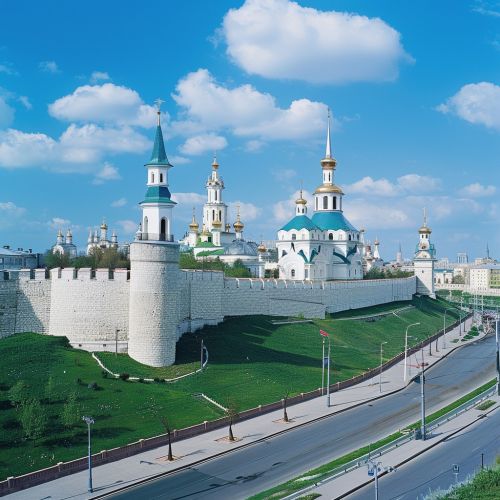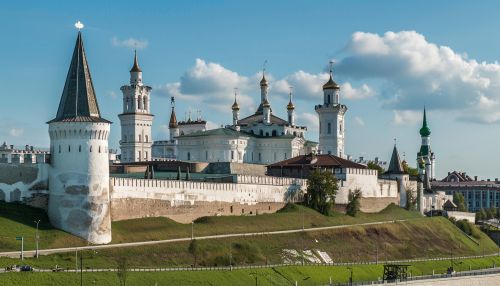Kazan Kremlin
History
The Kazan Kremlin is a historic fortress located in the city of Kazan, the capital of the Republic of Tatarstan, Russia. The Kazan Kremlin dates back to the Muslim period of the Golden Horde and the Kazan Khanate. It was conquered by Ivan the Terrible in 1552 and subsequently became the Christian See of the Volga Land. The complex was declared a World Heritage Site in 2000.


The Kazan Kremlin consists of an outstanding group of historic buildings dating from the 16th to 19th centuries, integrating remains of earlier structures of the 10th to 16th centuries. The site has been marked by significant historic events, and its architectural ensemble and archaeological vestiges bear testimony to the convergence of cultures.
Architecture
The Kazan Kremlin includes many old buildings, the oldest of which is the Annunciation Cathedral (1554-62), the only 16th-century Russian church to have six piers and five apses. Like many of Kazan's buildings of the period, it is constructed of local pale sandstone rather than of brick. The renowned Pskov architects Postnik Yakovlev and Ivan Shirjay (called Barma) were invited by the Tzar to rebuild the Kazan Kremlin in stone. The cathedral bell tower was erected in five tiers at the urging of Ivan the Terrible and was scored to resemble the Ivan the Great Belltower in Moscow, but was pulled down by the Soviets in 1930.
The most conspicuous landmark of the Kazan Kremlin is the leaning Söyembikä Tower, which probably goes back to the reign of Peter the Great. A well-known legend connects the tower with the last queen of Kazan. Another recognizable architectural feature is the Spasskaya Tower, which anchors the southern end of the Kremlin and serves as the main entrance to the complex.
Cultural Significance
The Kazan Kremlin is a symbol of the city, a cultural, historical, and architectural monument of federal significance. It is a unique example of a Tatar fortress, the only one of its kind preserved in Russia. The Kazan Kremlin is a place of special cultural and historical significance for the Tatar people and for all the peoples of Russia. It is a symbol of the historical continuity of the multi-ethnic and multi-confessional people of Tatarstan.
Preservation and Tourism
The Kazan Kremlin is a popular tourist destination and is one of the most important sites in the cultural heritage of Tatarstan and Russia. It is under the protection of UNESCO and is included in the World Heritage List. The Kazan Kremlin State Historical and Architectural Museum-Reserve is responsible for the preservation and study of the site.
